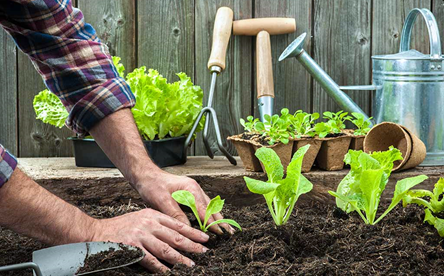Eco Gardening
Types of Soil for Eco-Gardening
Choosing the proper types of soil for eco-gardening can have an enormous impact on the overall health and productivity of your garden. Soil type can affect the fertility of the soil, what you can grow in it, and the types of plants that can grow in it. The type of soil that you use will depend largely on the species of plant that you will be growing. One of the most important factors is the type of nutrients that are in the soil.
1. Soil Rich in Organic Matter
A soil that is rich in organic matter tends to be high in nutrients like nitrogen, potassium, and phosphorus. These are the most important elements for plant growth. A soil with little organic matter tends to be low in nutrients and can be very acidic. Organic matter also gives the plants structure and forms a protective layer around the roots.
2. Different Soils According to Plants
A good rule of thumb is to choose the type of soil for your garden depending on what you will be growing primarily. If you plan on planting flowers, then a finer soil would be preferred over a loose gravel or loamy soil. Loam or sandy soil would be great for herbs, strawberries, and other plants that prefer the shade and moisture of the ground. A well-rotted garden bed of peat moss can be perfect for herbs, vegetables, strawberries, and other edible plants. Loose gravel would be okay for a vegetable garden and for crops that are disease resistant or that like to have a lot of sunlight.
3. Soil with More Humus
One of the types of soil for eco-gardening is the one that are rich in organic matter has the highest percentage of humus. Humus is the residue of dead plant matter and animal feces left in the soil. It is a highly desirable feature of any soil that has not been heavily weeded. This provides a healthy environment for the various organisms that live in your garden soil. Beneficials would feed on the organic matter in a garden that is rich in humus. Plants and animals will grow better and produce larger yields.
4. Nourishment for Earth Creatures
A soil that is rich in organic matter but not entirely organic, will still provide nourishment for the earths creatures. You will want to make sure that there are no traces of pesticides or herbicides on the soil. This is especially true if your garden is located outdoors. Pesticides can be hazardous to both the plants that grow within the garden and the wildlife animals that are drawn into the garden by the plants. Be sure that the soil is free from toxins before you begin.
5. Add Humic Acid to Soil
To improve the health of your soil and its ability to retain moisture, you should make sure to add humic acid. Humic acid is available in bark, bone meal, and straws. It is important to apply humic acid to your soil at least one month during the growing season. It will help protect your plants from diseases and will also provide them with nitrogen. Beneficial insects such as ladybirds and lacewings will also feed on the pests that destroy your garden.
6. Soil Slightly Acidic in Nature
An excellent choice of soil for gardening is one that is high in organic matter and is relatively acidic in nature. It is a slow releasing fertilizer that will not Leach heavy chemicals onto its surrounding areas. The best of these kinds of soils is created by sifting through sand and gravel that has been prepared by a company that specializes in producing fine-grained sand and gravel for such uses. Other types of soils are created by raking and mixing coarse materials together.
7. Using Sand and Gravel
There are two primary benefits to using sand and gravel in the creation of your garden soil. The first benefit is that it is an excellent medium for plant root growth. Many types of plants grow better in such a medium because it allows for the expansion of roots while it is in its initial stage of growth. Another benefit of these types of mediums is that they can also be used to break up clumps of soil for the purpose of creating more porous soil.
8. Conclusion
When you are selecting the right type of soil for your eco-gardening projects, you will want to consider two main things. One of these things is the overall health of the soil and the second is the type of animal life you will be attracting to your garden. If you will be growing fruits and vegetables then you will want softer soil so that the plants will have a better chance of taking root. On the other hand, if you will be planting flowers and small trees then you will want harder, faster-growing soil to maximize your landscaping efforts

